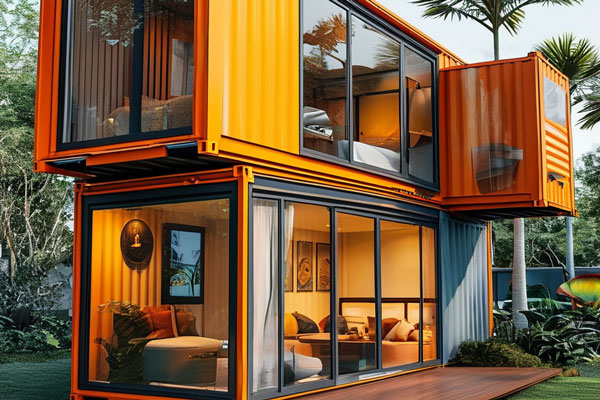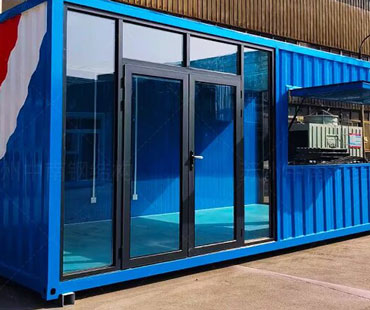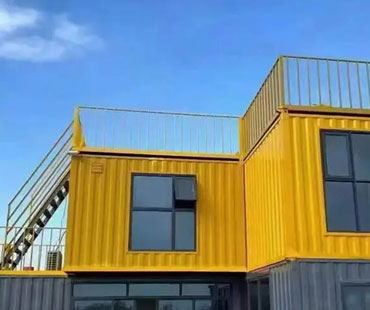In the dynamic landscape of urban development, container architecture is emerging as a transformative force, redefining how we think about space, sustainability, and design. By repurposing shipping containers, architects and designers are creating innovative structures that not only address the pressing need for affordable housing but also contribute to the aesthetic and functional revitalization of urban areas.
Container architecture refers to the design and construction of buildings using repurposed shipping containers as the primary structural element. These steel boxes, originally designed for transporting goods across oceans, are being transformed into homes, offices, retail spaces, and community centers. The appeal of using containers lies in their modularity, durability, and economic viability. They provide an innovative solution to the challenges of urbanization, particularly in areas facing housing shortages and rising construction costs.
One of the most significant advantages of container architecture is its sustainability. The construction industry is a substantial contributor to environmental degradation, from resource extraction to waste generation. By repurposing shipping containers, architects reduce the demand for new building materials and minimize construction waste. Additionally, container buildings can be designed with eco-friendly features, such as green roofs, solar panels, and rainwater harvesting systems, further enhancing their environmental credentials.
Moreover, container architecture promotes a circular economy by giving new life to materials that would otherwise sit idle in ports or landfills. This approach not only conserves resources but also encourages innovative thinking about how we utilize existing materials in urban settings.
Container architecture offers remarkable design flexibility, allowing architects to create diverse and visually striking structures. The modular nature of containers means they can be easily stacked, arranged, and combined in various configurations. This adaptability is particularly beneficial in urban environments where space is limited.
Designers can create multi-unit dwellings, community hubs, or temporary structures for events and exhibitions. The industrial aesthetic of container architecture, characterized by raw materials and exposed structures, can also serve as a bold statement in urban design. This aesthetic resonates with contemporary tastes and can be harmoniously integrated into existing architectural styles, contributing to a city’s unique character.

Several cities worldwide have embraced container architecture as a solution to housing and space challenges. For instance, in Amsterdam, the “Container City” project showcases how shipping containers can be transformed into vibrant community spaces, including shops, cafes, and art studios. This project not only provides affordable commercial space but also fosters community engagement and creativity.
In the United States, cities like Los Angeles and New York have seen container housing developments emerge as affordable alternatives to traditional homes. Projects like the “Container Park” in Las Vegas utilize shipping containers to create mixed-use spaces that host retail, dining, and entertainment options, enhancing the urban environment while supporting local businesses.
Despite its many advantages, container architecture faces challenges that must be addressed for wider adoption. One primary concern is the need for adequate insulation and climate control, as metal containers can be prone to extreme temperatures. Designers must ensure that these structures are comfortable and livable year-round by investing in proper insulation materials and ventilation systems.
Additionally, zoning regulations and building codes can pose obstacles to container construction. Many urban areas have strict guidelines that do not account for unconventional building methods, which can hinder innovative projects. Advocates for container architecture must work closely with policymakers to promote regulatory frameworks that support this sustainable building approach.
As urbanization continues to accelerate, the need for innovative and sustainable housing solutions becomes increasingly urgent. Container architecture holds significant potential to reshape urban spaces, providing affordable, flexible, and environmentally friendly options for city living. By embracing this approach, cities can foster a culture of creativity, sustainability, and community engagement.
In conclusion, container architecture is more than just a trend; it represents a paradigm shift in how we design and inhabit urban spaces. By reimagining shipping containers as building blocks for the future, we can create vibrant, functional, and sustainable urban environments that meet the needs of diverse populations. As this movement continues to evolve, it will undoubtedly play a crucial role in shaping the cities of tomorrow.


